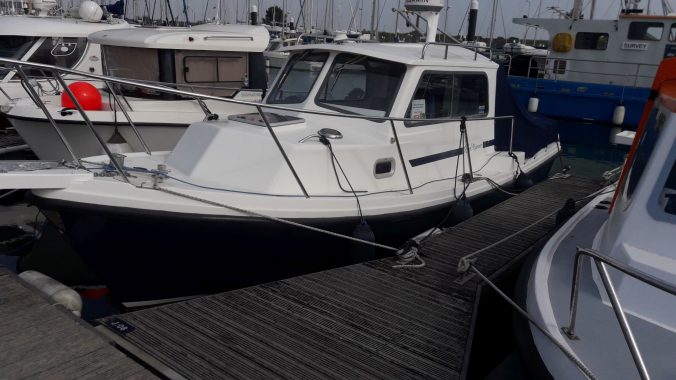Many of us were planning to use our boats this Spring, then suddenly we were prevented from getting to them even to shut them down properly. You may be worried that the prolonged idleness has harmed the engine, or you could cause harm by starting it without any further checks.
This week I attended an excellent webinar from Premier Marinas where Jonathan Parker of Parker Marine Services described what to do to minimise any engine damage when starting for the first time after lockdown. Here’s what he shared.
I won’t go into detail on the usual daily pre-start checks, obviously you would do these anyway:
- Check engine oil level
- Check gear oil level and colour (milky means water has got in)
- Check engine coolant level
- Check power steering reservoir if fitted.
- Check belt tensions
- Turn battery switches on
- Open seacocks
- Check bilge for unusual levels of water or signs of engine fluid leaking
- Check raw water strainer for debris
Pay particular attention to the raw water filter if fitted, because if your boat is in the water unused for a long period, marine creatures can climb into the filter and start living there.
The following are additional checks advised by Jonathan.
- Check for debris in the water or around your propeller
- Check your fuel filler cap and seal – was it on tight and could water have entered? If so check for water in the tank and fuel filter.
- Check the fuel filter bowl for water.
- If an outboard or outdrive leg has been left in the water, raise the leg and scrub weeds off the water inlet area.
- If you have a raw water strainer above the waterline, take the cap off and fill it with water so the feed to the impeller is primed. Refiot the cap securely
- Prime your fuel pump by pumping the lift pump about 20 times on a diesel engine, or squeeze the fuel line primer bulb on an outboard.
- Turn the engine over without starting it.
On a diesel engine you can do this by holding the Stop button or the decompression lever down while you crank the engine. This operates the oil pump and puts some oil in the bearings before loading them with a running engine.
Now you are ready to start the engine. Again, there are some standard checks you would always do after the engine starts:
- Oil pressure and charging warning lights and buzzer stop after a few seconds
- Ammeter/voltmeter show the alternator is charging – 13.5 to 14.5 volts
Raise the speed to 1200rpm in neutral. This helps the impeller draw water in. Now for some extra checks.
- Is cooling water circulating?
On an outboard you can see a water tell-tale jet. With a raw water strainer fitted you can see the water flow. On an enclosed system like an outdrive, feel the impeller housing – it should feel distinctly colder than the surrounding engine as water flows through. The same with the exhaust elbow. If it is difficult to reach you can use an infrared thermometer.
- Turn the steering lock to lock both directions to ensure it is free.
Ensure the boat is tied up securely with extra spring lines to secure bollards.
- Put the engine in gear at idle speed. This adds load, and gets the gearbox and propeller moving in their bearings and seals.
- Put the engine in gear in reverse at idle speed.
- Check for unusual noises or vibration
Run the engine in gear for 30 minutes or at idle for 45 minutes to bring it up to working temperature.
- Check that there is no overheating
- Check for leaks
- Check battery condition – no bulging, heat or sulphurous smell
If no problems are evident and you are allowed out, you can proceed. If you discover any problems, at least you are still at your berth and not drifting down the Langstone Run towards the pier (my personal nightmare).
If you are not allowed out, you need to shut the boat down as if you may be leaving it for some time.
- Fill tanks if possible
- Seacocks shut
- Battery switches off
- Fuel filler cap tight
- Doors, windows and hatches shut
- Vents open, if fitted
- Covers secure
- Fenders secure
- Mooring warps secure and not chafed
- Lock doors
- Remove perishable food and rubbish so you don’t attract rats
- Remember to take your phone home!
Let’s hope we are allowed out soon and can get back to enjoying our boating. The guidelines above are useful for starting your engine or running up your engine for any prolonged period without use, whatever the reason. Anglers are used to having a boat tied up for weeks on end due to bad weather – this now gives us a good excuse to spend time on your boats even if you can’t go fishing!

Leave a Reply
You must be logged in to post a comment.